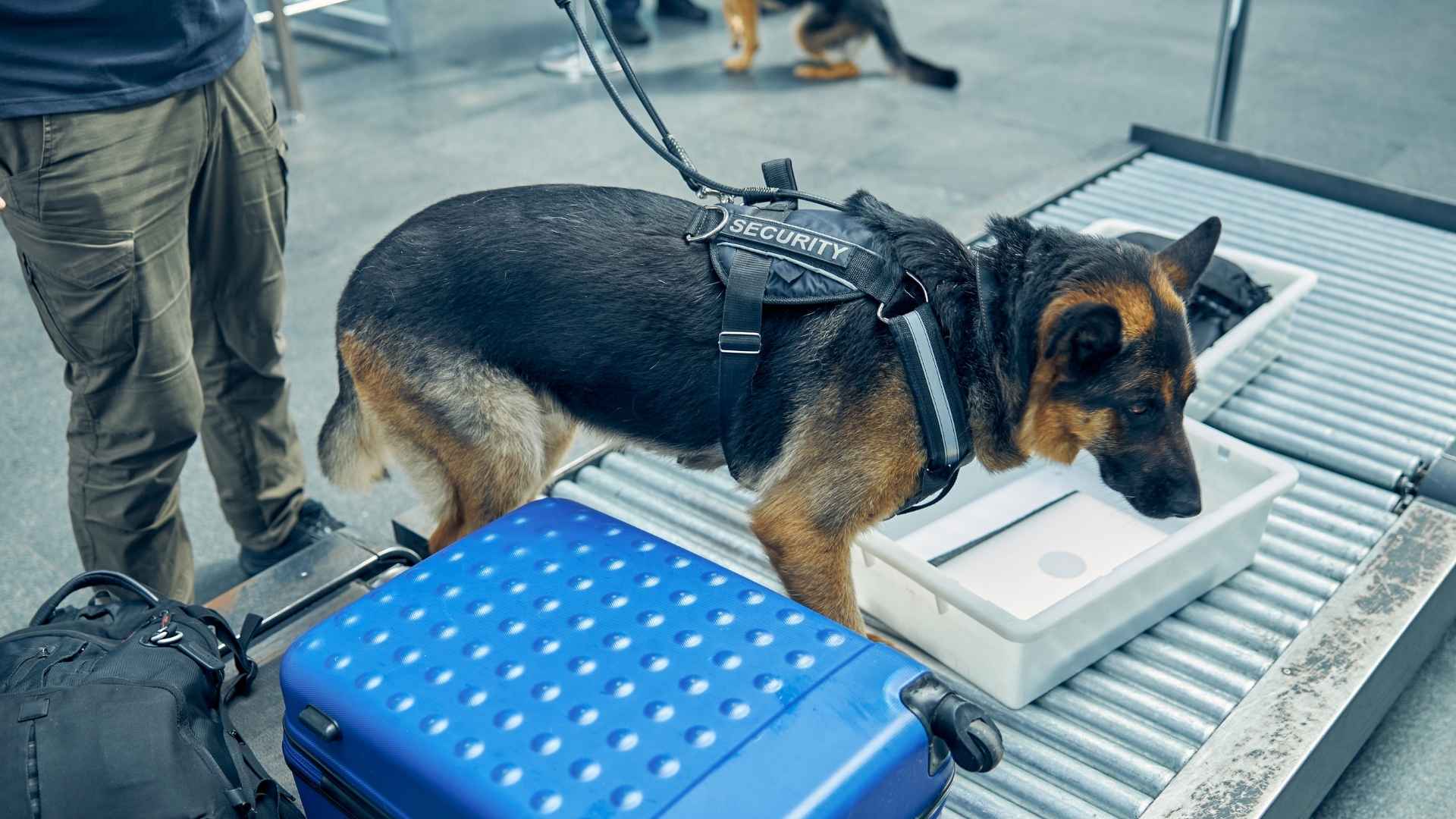From bustling international terminals to regional airstrips, airport security plays a crucial role in ensuring the safety of millions of travelers every day. Behind the scenes, and often right beside us in the terminal, are highly trained dogs who use their powerful noses and unwavering focus to assist in keeping threats at bay.
These four-legged agents aren’t just cute, they’re skilled professionals, capable of detecting explosives, narcotics, and even prohibited food items with incredible accuracy. But not every dog is cut out for such high-stakes work. Specific breeds are favored for their intelligence, drive, temperament, and sniffing ability.
In this article, we explore seven dog breeds most commonly used in airport security and uncover what makes each one particularly suited for life in the line of duty. Whether patrolling luggage carousels or navigating crowds at departure gates, these dogs are essential partners in protecting the skies.
Dog Breeds Used In Airport Security
1. German Shepherd
According to the American Kennel Club, the German Shepherd is one of the most iconic working breeds, widely recognized for its intelligence, loyalty, and versatility. Originally developed in the late 1800s by Captain Max von Stephanitz, these dogs quickly rose to prominence as military and police partners due to their strong work ethic and adaptability.
German Shepherds are prized in airport security roles for their exceptional scent detection skills, courage, and trainability. Their ability to remain calm under pressure makes them ideal for detecting explosives, narcotics, and contraband in fast-paced, high-traffic environments. They’re also physically capable of takedowns and suspect tracking when necessary.
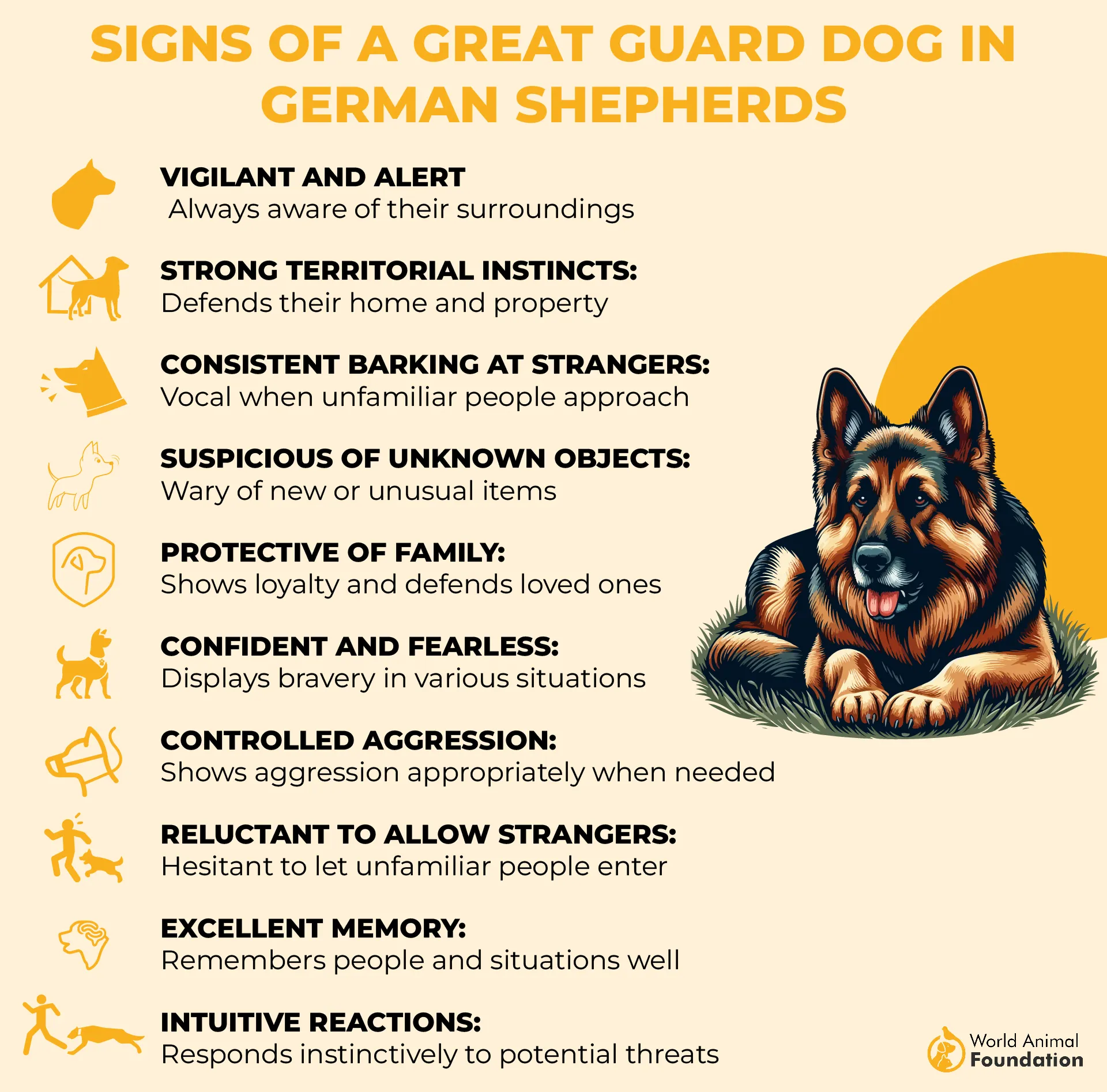
With a strong sense of duty and eagerness to please, these dogs excel with consistent training and a bonded handler. They’re not just effective sniffers, they’re also imposing enough to serve as a psychological deterrent in public settings.
German Shepherd Highlights
• Highly intelligent and responsive to advanced training
• Performs well under stress, making them ideal for high-security environments
• Versatile: excels in detection, tracking, and protection work
2. Labrador Retriever
Labrador Retrievers are known for their friendly nature and sharp intelligence, which makes them a top choice for detection roles in passenger areas of airports. Originally bred for retrieving waterfowl, their enthusiasm for work and strong bond with humans translate well to service settings.
Labs are especially favored in environments with heavy foot traffic because of their approachable demeanor. They are frequently deployed for explosive and narcotics detection, as well as screening luggage and passengers. Their keen noses and steady temperament allow them to focus in noisy, crowded places.
In addition to their work ethic, Labs have a strong food drive, which makes them easy to motivate during training. They also adapt well to different tasks, from scent detection to search and rescue operations.
Labrador Retriever Highlights
• Friendly, people-oriented disposition—ideal for public-facing work
• Exceptional scent detection ability and fast learning curve
• Commonly used for explosives, narcotics, and accelerant detection
3. Vizsla
The Vizsla is a Hungarian sporting breed known for its athleticism, keen nose, and sensitive temperament. Originally developed for pointing and retrieving game, Vizslas bring natural hunting instincts and boundless energy to their work in airport security.
These dogs are especially valued for their focus and stamina. In detection work, they demonstrate an ability to remain attentive during long searches and can perform well in both open areas and confined indoor spaces. Vizslas are also gentle and responsive, making them easier to handle in complex environments.
PetMD states that while they require regular mental and physical stimulation, Vizslas respond extremely well to positive reinforcement. Their strong bond with handlers often enhances communication and effectiveness on the job.
Vizsla Highlights
• Naturally driven and energetic—ideal for long search tasks
• Sensitive and obedient, thrives on handler connection
• Effective in scent-based detection with strong endurance
4. Golden Retriever
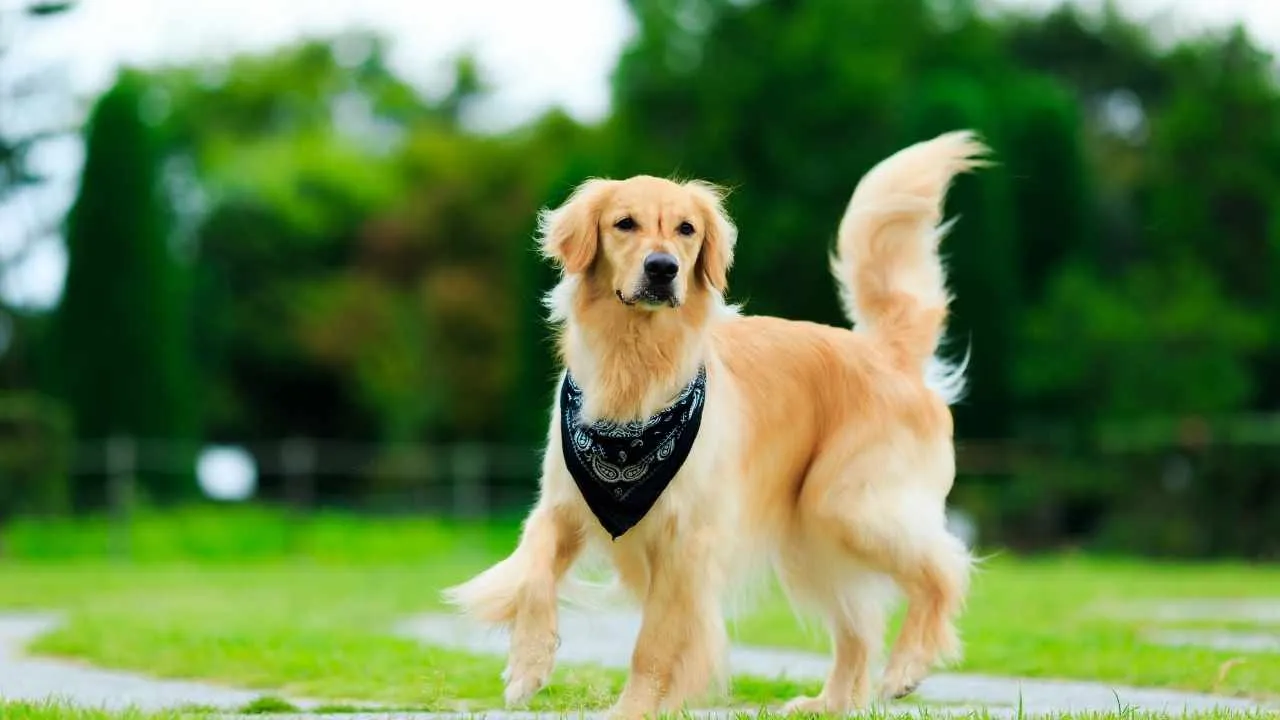
Golden Retrievers are widely loved for their gentle temperament, trainability, and eagerness to please. Originating in 19th-century Scotland, these dogs were initially developed for retrieving game from land and water, which laid the foundation for their sharp scenting abilities and cooperative nature.
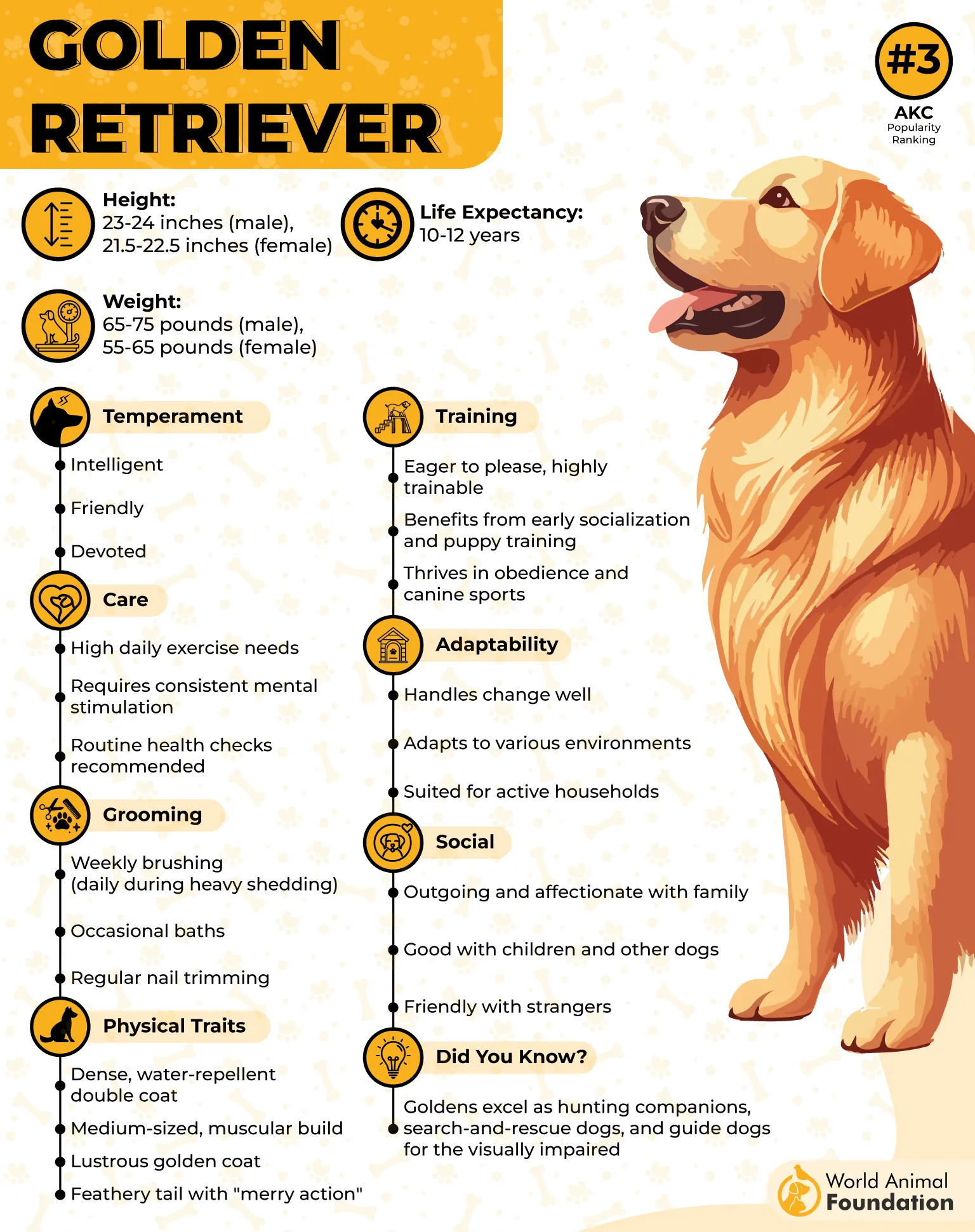
In airport security, Golden Retrievers are used in multiple capacities, including explosives and narcotics detection, as well as emotional support for travelers in high-stress environments. Their steady temperament, intelligence, and reliability make them valuable additions to detection teams, particularly where public interaction is frequent.
Their large size, soft features, and friendly demeanor make Goldens an approachable option for working around civilians. At facilities like the TSA’s Canine Training Center in Texas, Golden Retrievers undergo rigorous training to become reliable detection partners.
While not naturally aggressive, Golden Retrievers are protective of their handlers and families. Their intelligence and obedience make them excellent candidates for both security work and general assistance roles.
Golden Retriever Highlights
• Friendly, obedient, and highly trainable in public-facing roles
• Frequently used for explosives and narcotics detection
• Calm demeanor makes them ideal in high-traffic passenger areas
5. Belgian Malinois
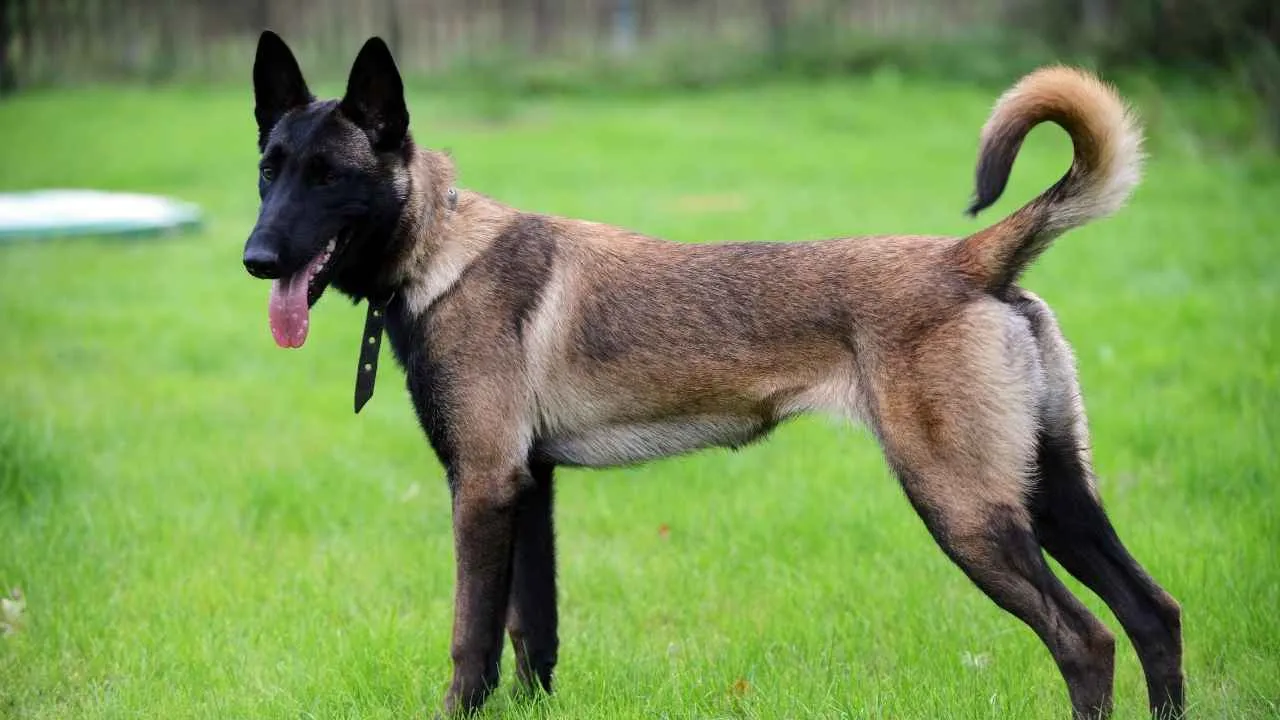
The Belgian Malinois is a high-energy, highly focused breed originally developed for herding in Belgium. While often mistaken for a German Shepherd, the Malinois is more compact and agile, known for its quick reaction times and strong drive to work.
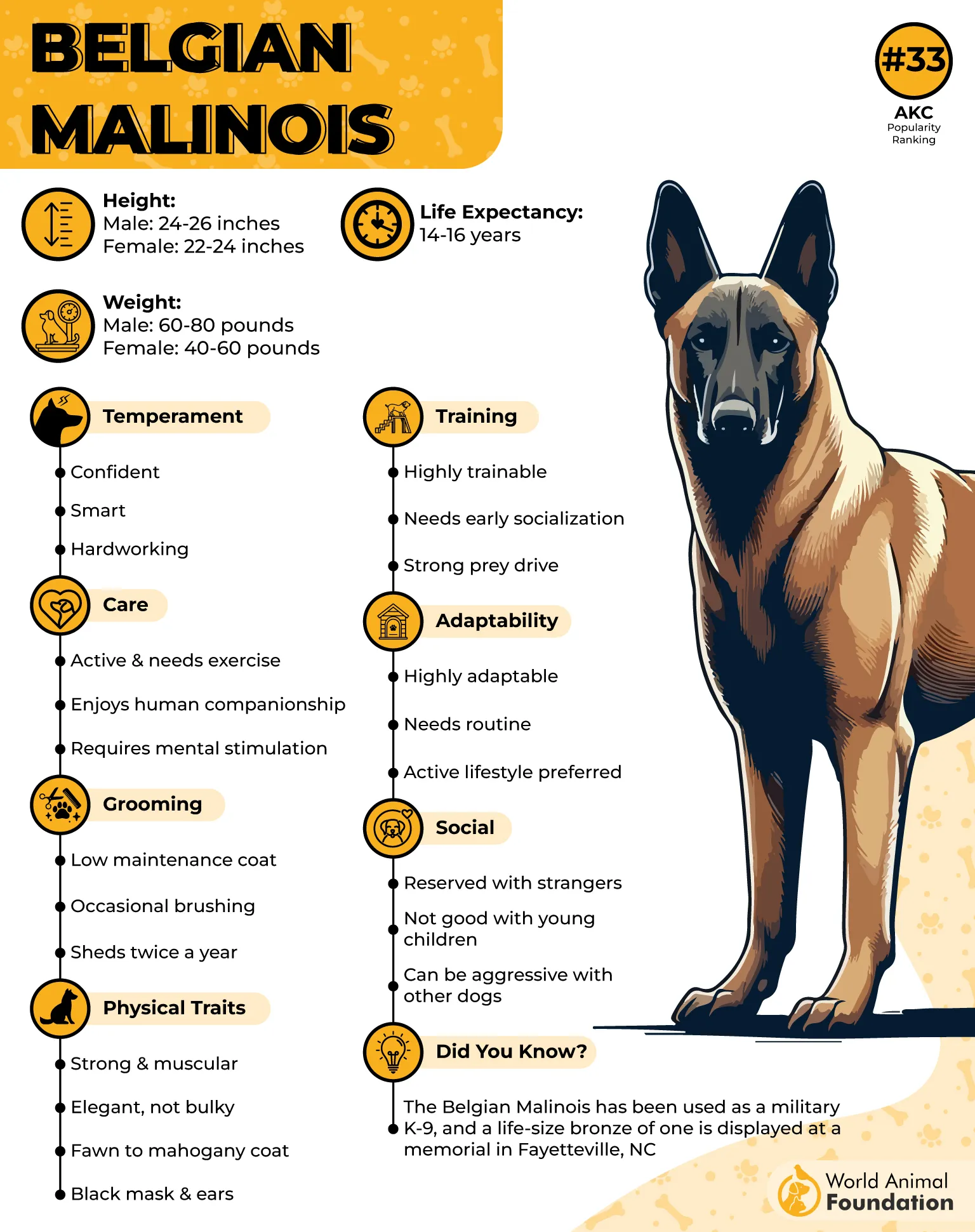
Britannica states that these dogs have become increasingly favored by military and airport security teams for detection and patrol duties. Their keen noses and relentless work ethic allow them to excel in explosives and narcotics detection, as well as tracking and suspect apprehension.
Malinois dogs are fast learners with exceptional stamina and sharp instincts. However, they require early socialization and continuous training to ensure balanced behavior, especially in stimulating airport environments.
Their intensity and loyalty make them excellent partners for experienced handlers. In many cases, Malinois are deployed in roles requiring both mental precision and physical agility.
Belgian Malinois Highlights
• Fast, responsive, and highly driven working dogs
• Suited for high-stakes detection and patrol work
• Require consistent training and experienced handling
6. Bloodhound
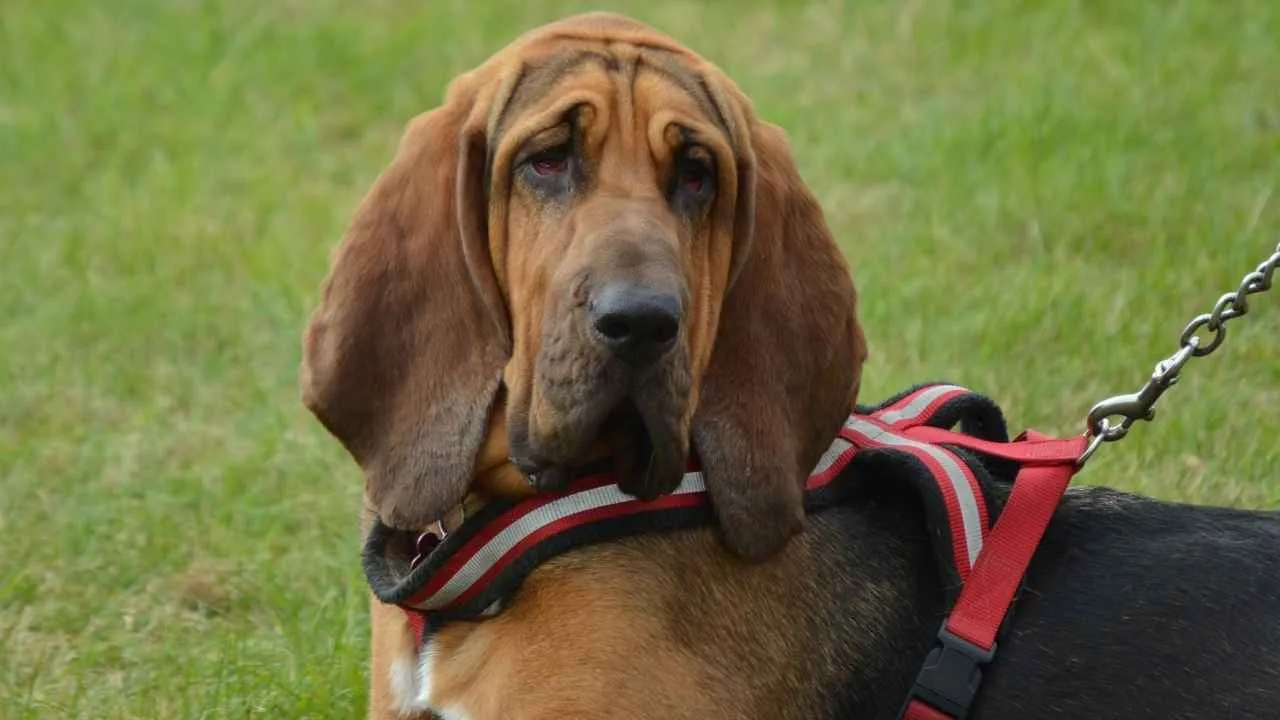
Bloodhounds are unmatched when it comes to scent-tracking. Known for their loose skin, long ears, and mournful expressions, they possess a staggering 300 million scent receptors—the most of any dog breed.
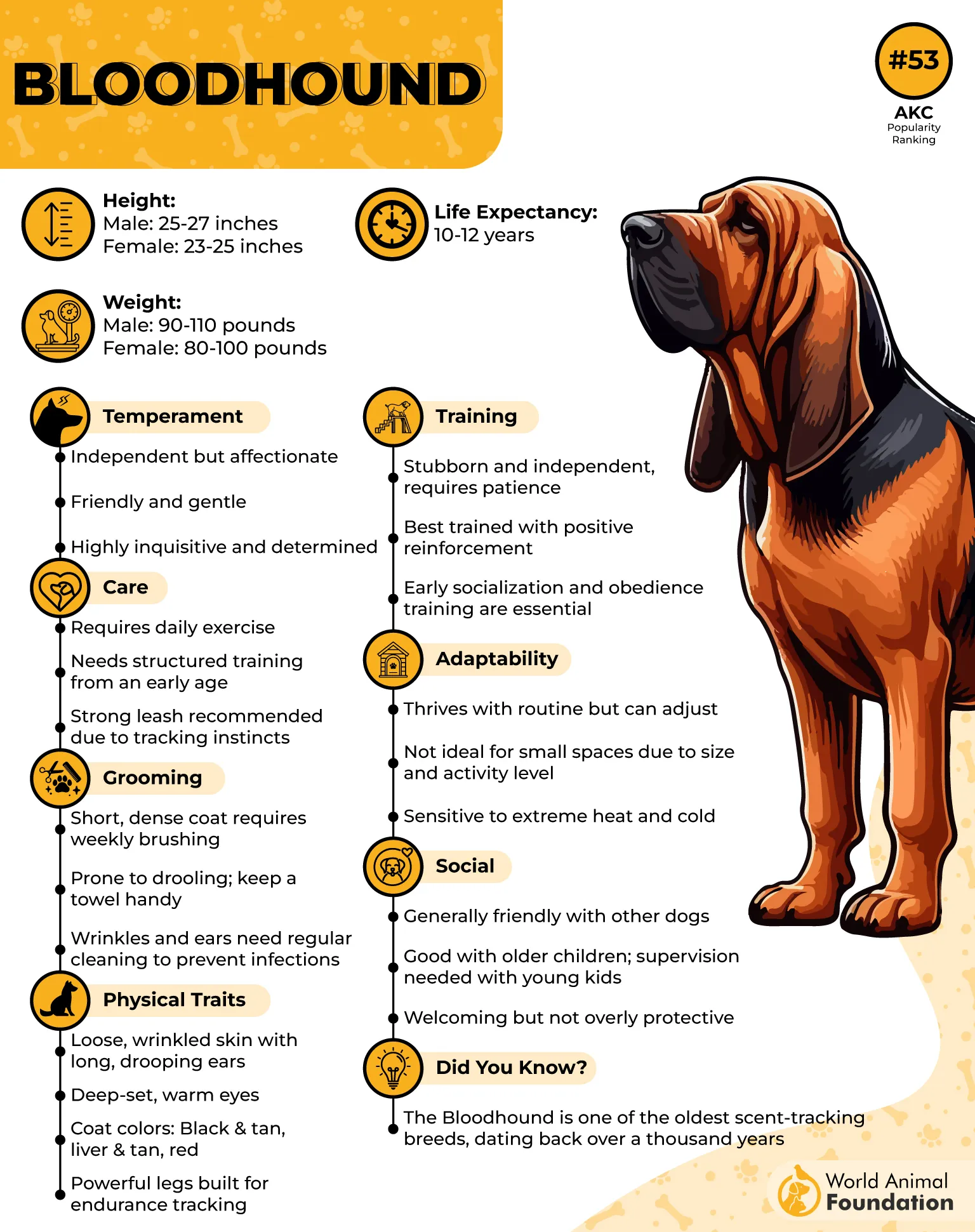
Their exceptional tracking ability is so accurate that the evidence they discover is often admissible in court. In airport settings, Bloodhounds are valuable for locating missing individuals, identifying suspects, or tracking movements across complex environments like terminals and runways.
While they may not be as fast or aggressive as other breeds used in detection work, Bloodhounds provide unique value in extended investigations and search-and-rescue operations. Their calm demeanor also makes them approachable to the public.
Training Bloodhounds for airport work involves extensive conditioning to various environments. With a skilled handler, they are a vital tool in airport policing and public safety.
Bloodhound Highlights
• Elite scent-tracking abilities are ideal for search and rescue
• Can assist with missing persons, suspect pursuit, and evidence recovery
• Calm and gentle, making them easy to integrate into busy public spaces
7. Dutch Shepherd
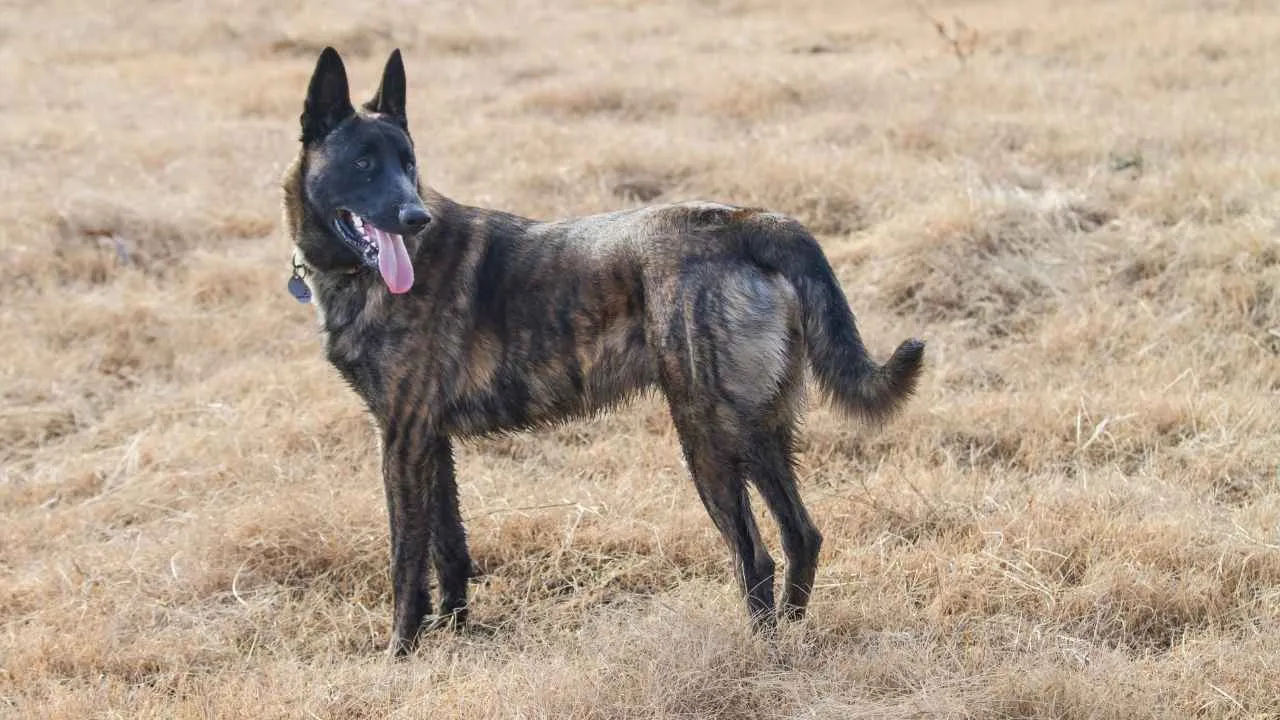
The Dutch Shepherd is a rare but highly capable working breed that originated in the Netherlands. Originally used for herding and protecting livestock, they are built for endurance, agility, and precision—all traits that make them excellent detection dogs.
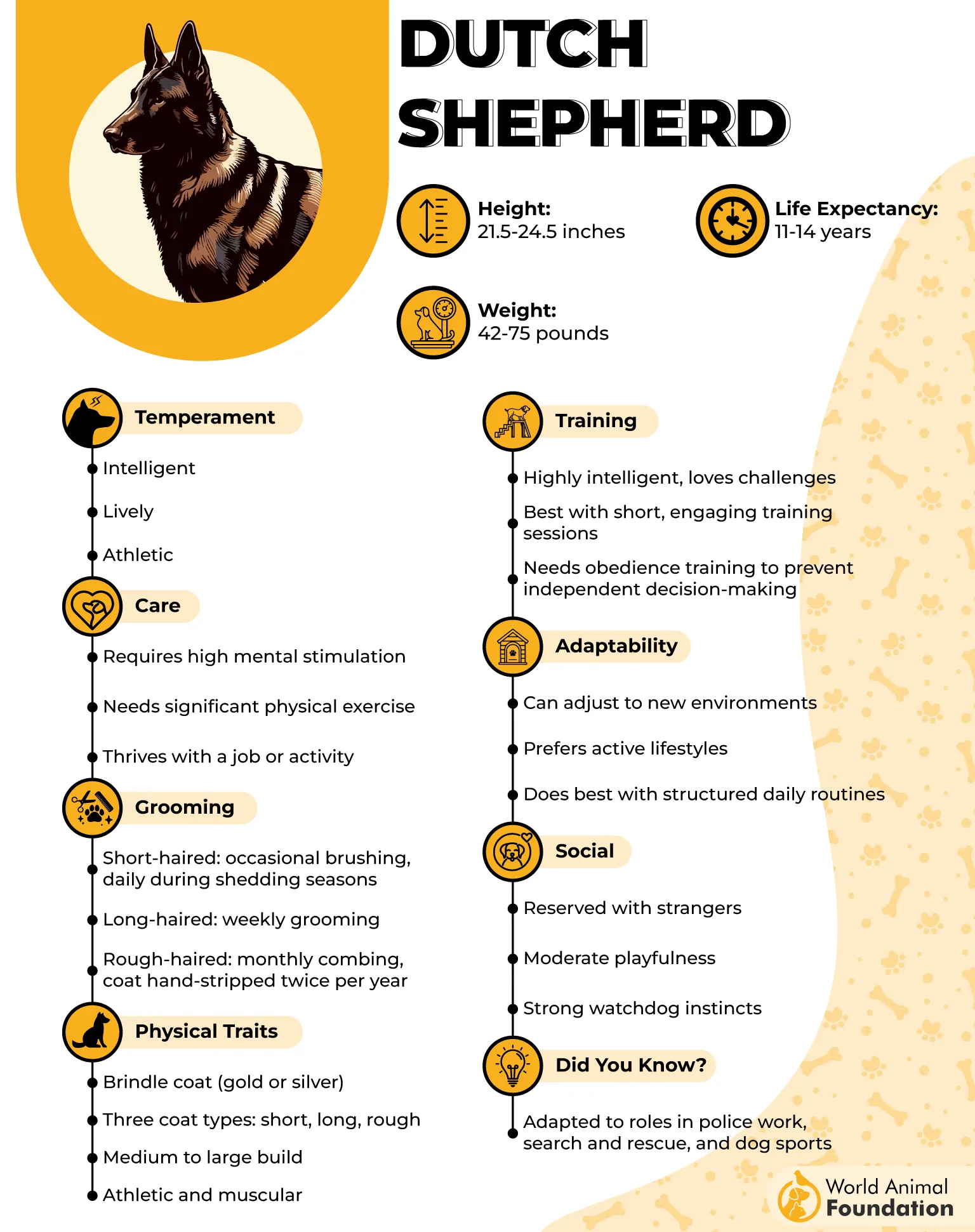
Their wolf-like appearance and brindle coat give them a distinct presence. Dutch Shepherds are intelligent, obedient, and possess natural protective instincts, though they are typically less aggressive than breeds like the Malinois or German Shepherd.
In airport security, Dutch Shepherds are used primarily for detection and patrol duties. Their balanced temperament and adaptability make them well-suited for both high-energy detection tasks and calmer public settings.
Although not as commonly deployed as other working breeds, they are gaining traction among law enforcement and security organizations for their dependability and quick learning.
Dutch Shepherd Highlights
• Agile and obedient with strong herding and detection instincts
• Ideal for narcotics, explosives, and perimeter patrol
• Naturally alert and reliable in complex working environments
Conclusion
Dogs have been trusted partners in human endeavors for thousands of years, from loyal hunting companions to courageous protectors. Today, they serve on the frontlines of security, using their exceptional sense of smell and intuitive awareness to protect people and property. Nowhere is this more evident than in the world of airport safety, where detector dogs are vital in locating explosives, drugs, and other illegal substances.
Across the country, the Transportation Security Administration and other law enforcement agencies rely on a variety of breeds, each chosen for its particular strengths. From the high-drive energy of the Belgian Malinois to the unmatched scent-tracking skills of the Bloodhound, these dogs work tirelessly in passenger terminals, cargo areas, and beyond.
These working animals are trained to fine-tune their instincts and remain focused in high-pressure environments. Whether assisting in a search operation, inspecting cargo, or patrolling public spaces, police dogs provide a crucial layer of security without relying on aggression or intimidation.
Their courage, loyalty, and discipline set them apart, not just as protectors, but as valuable members of the homeland security force. From kennels to fieldwork, these dogs do more than serve; they inspire.


